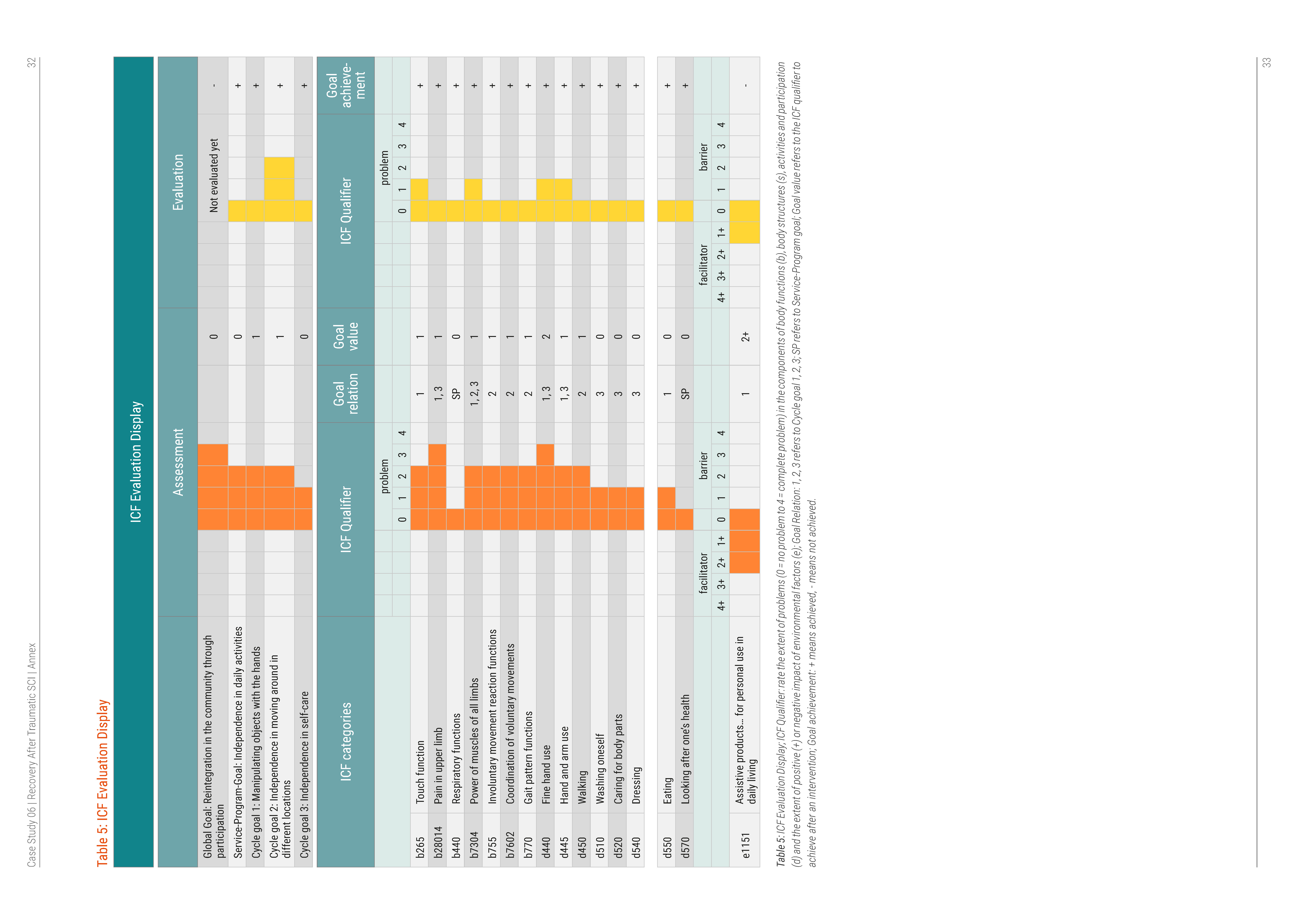Evaluation

Four weeks after Mr. Seiler's traumatic accident, the early post-acute Rehab-Cycle® was concluded with an evaluation of progress. The encouraging results showed that Mr. Seiler’s recovery had surpassed his own expectations as well as those of the rehabilitation team.
The positive course of recovery of Mr. Seiler's impaired body structures, as well his pro-activity, motivation and self-discipline all contributed significantly to his rehabilitation success.
Not only were all of the intervention target goals achieved, six of the intervention targets remarkably exceeded the expected outcome – for example the intervention targets that were addressed to relieve Mr. Seiler of hand pain and increase the functionality of Mr. Seiler's hands. The intervention target b28014 Pain in upper limb was expected to reach a final value of '1' after being addressed with medication. Since Mr. Seiler experienced no more pain in the upper limbs at the time of the evaluation, this intervention target was rated with a final value of '0', thus exceeding the expected outcome. Likewise, d440 Fine hand use, rated as severe at the assessment phase and addressed with exercises that required him to grab different types of material and functional games, was rated as a minor problem at the evaluation phase. A similar picture was also seen in the improvement of d445 Hand and arm use. As a result of this "over-achievement" in these intervention targets, Mr. Seiler exceeded the expected final value for cycle goal 1 i.e. manipulating objects with the hands. See table 5 ICF Evaluation Table below.

Table 5: ICF Evaluation Display; ICF Qualifier: rate the extent of problems (0 = no problem to 4 = complete problem) in the components of body functions (b), body structures (s), activities and participation (d) and the extent of positive (+) or negative impact of environmental factors (e); Goal Relation: 1, 2, 3 refers to Cycle goal 1, 2, 3; SP refers to Service-Program goal; Goal value refers to the ICF qualifier to achieve after an intervention; Goal achievement: + means achieved, - means not achieved.
Consequently, overwhelming success in all of the cycle goals contributed to reaching the anticipated service-program goal of greater independence in daily activities.
The whole process of Mr. Seiler’s recovery has proceeded exceptionally, starting from the actions of those who first found him to the actions of the rescue crew and the medical team responsible for his acute care and rehabilitation ... and of course, Mr. Seiler himself. Each person involved was a link in a chain of events that directed an accident victim toward the best recovery possible. We are all pleased beyond words.
Mr. Seiler’s physician
I think I’m one of the happiest patients here. Within one month, I’ve recovered so much. I didn’t think I would have my health back again. It’s my second life – I never thought I’d stand again. I will absolutely not take this second life for granted! I think being athletic helped me a lot – my swimming, skiing and working hard all contributed. I have a lot of strength and stamina. I drink very little and don’t smoke. Overall, I’m an exceptionally healthy person. Even my medical examinations after the accident showed I was in great health – this was really encouraging...I have to admit that the greatest support for me was the care I received. The rescue workers, the intensive care team and the rehabilitation team were all so warm and understanding; they really helped me along psychologically.
Mr. Seiler reflecting about his recovery process at the end of the Rehab-Cycle®